How Often Should Kids Bathe?
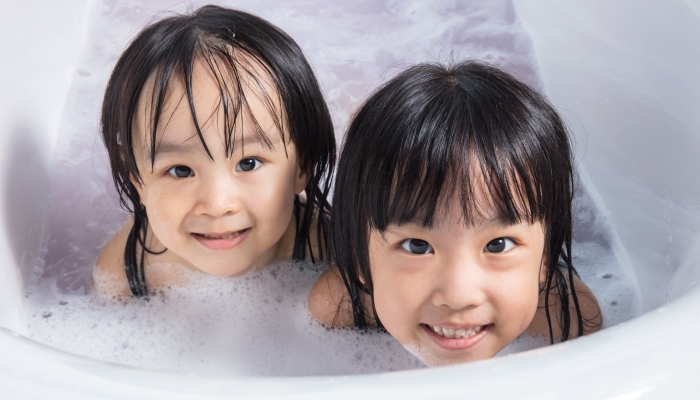
- There’s no right answer to the question “how often should kids bathe?” What matters is what’s right for your child.
- The American Academy of Pediatrics recommends bathing younger kids up to three times a week, while one to two times a week is considered enough for older kids.
- Your child may enjoy a daily bath or not. Respect their preferences when you can, and remember: Showers, washing with a washcloth, and even adding bubbles to your paddling pool are all acceptable alternatives to soaking in the tub.
For some families, a nightly bath is an essential element of the bedtime routine. If your child hates bath time though, you might be wondering what you’re doing wrong. Not only do you feel like you’re missing out on something special, but you’re worried about failing your child and risking their health.
The truth is your child doesn’t always need a bath to get clean. For some kids, too many baths can do more harm than good.
How often kids should bathe will vary from one child to the next. Let’s find out more and wash those worries away once and for all.
Do Kids Need to Take a Bath Every Day?
While many children enjoy a bath every day—and that’s fine—it’s not essential for good health and hygiene. We all need to wash regularly, but there’s no need for your child to bathe daily.
In fact, daily baths may not be the best thing for your baby’s skin. Your child’s immune system is still developing, and the skin is an important line of defense against infection.
Glands in the skin produce protective oils. The natural antibacterial and anti-inflammatory qualities of these oils help with healing and maintaining healthy moisture levels. Frequent bathing can disturb this delicate balance and lead to dry skin, especially if your child has certain skin conditions.
Make sure any products you use are safe for children. Read labels carefully, use sparingly, and look for natural ingredients that are kind to your child’s skin and the planet. Adding breastmilk to your baby’s bath is effective at treating mild eczema and diaper rash.
Bathing Recommendations for Each Age Group
Bathing recommendations aren’t the same for babies, children, and teens. Depending on the age of your child there are a few different things to consider.
Babies
Bathtime can be especially stressful for babies, and too frequent washing can lead to skin irritation. The American Academy of Pediatrics (AAP) recommends that you only bathe your little one up to three times a week rather than every day.
In between, and before the umbilical stump falls off, your baby might prefer sponge baths.
Swaddled bathing is another alternative, where your baby is wrapped in a towel and unwrapped only as each area of the body is washed. Some babies also prefer the more enclosed feeling of a baby bathtub.
Children
Children can have a daily bath if they like, but once or twice a week is fine. Your child might need more baths:
- for specific medical reasons.
- after using sunscreen or insect repellent.
- after swimming in the pool or ocean.
- when muddy or dirty.
Bathtime can be especially calming for sensitive children. The magnesium in Epsom salts is believed to boost the natural release of melatonin helping your child fall asleep, while a 2007 study published in the academic journal Early Human Development found that a few drops of lavender oil in your child’s bath promotes better sleep.
Teens
Many teens naturally transition to a daily bath or shower, especially if playing sports, sweating heavily, or conscious of body odor. If not, targeted washing with a washcloth, prioritizing hands, face, groin, and armpits is a quick and effective alternative.
Just like younger kids, teens might find a soothing bath relieves stress. Consider running them a bath after a tough day and invest in waterproof speakers so they can enjoy music or an audiobook while they soak.
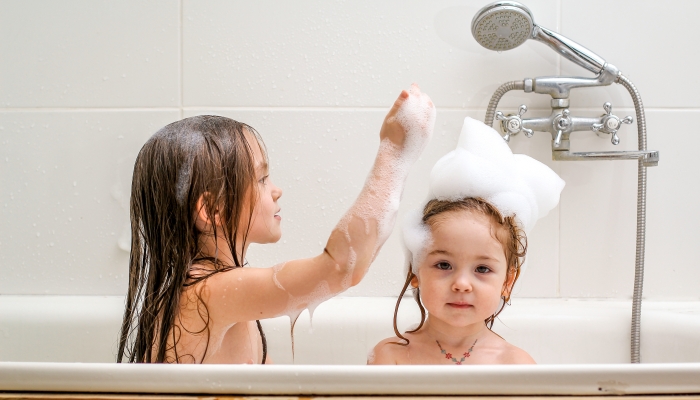
When Is the Best Time of the Day to Bathe Your Kid?
This depends on your schedule and personal preferences. Many parents find fitting a bath into the bedtime routine works well. A warm bath before bed can help your child relax, setting them up for better sleep.
Bathing with your baby or toddler is a wonderful chance for skin-to-skin contact, important for bonding, breastfeeding, and even brain development.
Helping your child take a bath after a busy day offers a welcome opportunity to wind down and chat about your day, reconnecting if you’ve been apart.
If your child seems stressed or complains of boredom, a bath can lift their mood and give you a chance to check in and find out what’s going on.
How to Make Your Kid’s Bath Time Safe and Fun
Water play is fascinating and an ideal opportunity to experiment. Babies don’t really need bath toys, but older children may enjoy playing with household items like measuring cups and sieves.
Offer to read aloud or let them bring a favorite toy to the bath. Check that they’re suitable for use in water, dry them carefully, and regularly clean bath toys.
Bathtime can be dangerous. Minimize the risks with a few simple safety precautions:
Drowning
Drowning is the most common cause of death for under fives in the US.
- Gather everything you need for your child’s bath before they get in.
- Stay close enough to touch—just an inch of water can drown a child.
- Empty the water as soon as bathtime is over.
Burns
Babies and children have thinner skin than adults and are susceptible to scalding in hot water.
- Set your water heater to 120°F or lower.
- Fill the bath before your child gets in, running cold first, and use a thermometer or your elbow to check that the water is warm, not hot.
- Cover hot fittings with a small towel.
Falls and Injuries
Dangerous enough on their own, slips and falls also increase the risk of drowning.
- Use a non-slip mat in the bath.
- Keep extra towels on hand to mop up spills.
- Check your posture and avoid too much bending.
Electrocution and Poisoning
Bathrooms contain many hazards.
- Unplug electrical appliances and keep them in a different room.
- Store medications and cleaning products safely.
- Regularly check bath toys, furniture, and fittings for dirt, damage, and mold. Dispose of and treat appropriately.
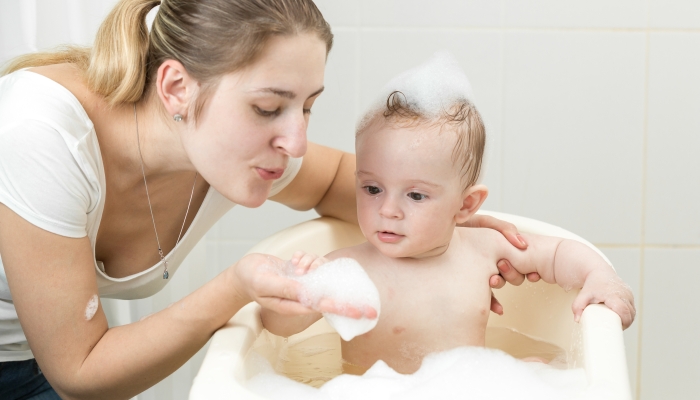
Helping Your Kid Develop Healthy Bathing Habits
Bathing is one of those repeating tasks of parenting you’ll do again and again. Embrace the chance to enjoy your child’s company and offer undivided attention.
Of course, you want to encourage your child’s self-care skills, but you can’t rush independence. Your child will get there at their own pace.
Be generous with your time and attention and encourage your baby to take an active role in their own care from the start. Offer lots of choices and invite them to assume more responsibility as they grow. Break down complicated tasks into small steps they can follow, and avoid demands as these can lead to power struggles, especially with a strong-willed toddler.
You are your child’s most powerful model. Set a good example with your own habits and how you treat them. The more love and respect you give, the more they have for themselves, so naturally, they’ll want to take good care of their bodies and minds.
It’s okay if sometimes your child needs more support than others.
You don’t have to jump in and do everything. A little patience, gentle reminders, and lots of empathy might be all they need. When you do help more, don’t worry that this will set them back. It won’t.
Be optimistic about the future while embracing the present—this is where you build your relationship with your child and that’s the most powerful influence you have.
FAQs
When can you allow your kid to take a bath alone?
It depends on your child. Most kids aren’t ready until at least five, and for some, it’s closer to ten. You know your child best. Make this decision with them and stay close to offer assistance if needed.
How long should a kid’s bath time last?
How long bath time lasts is a matter of personal preference. There’s no need for your child to stay in the bath any longer than they want. A quick soak will remove most dirt, but if they’re happy in the tub, there’s no need to rush them either.
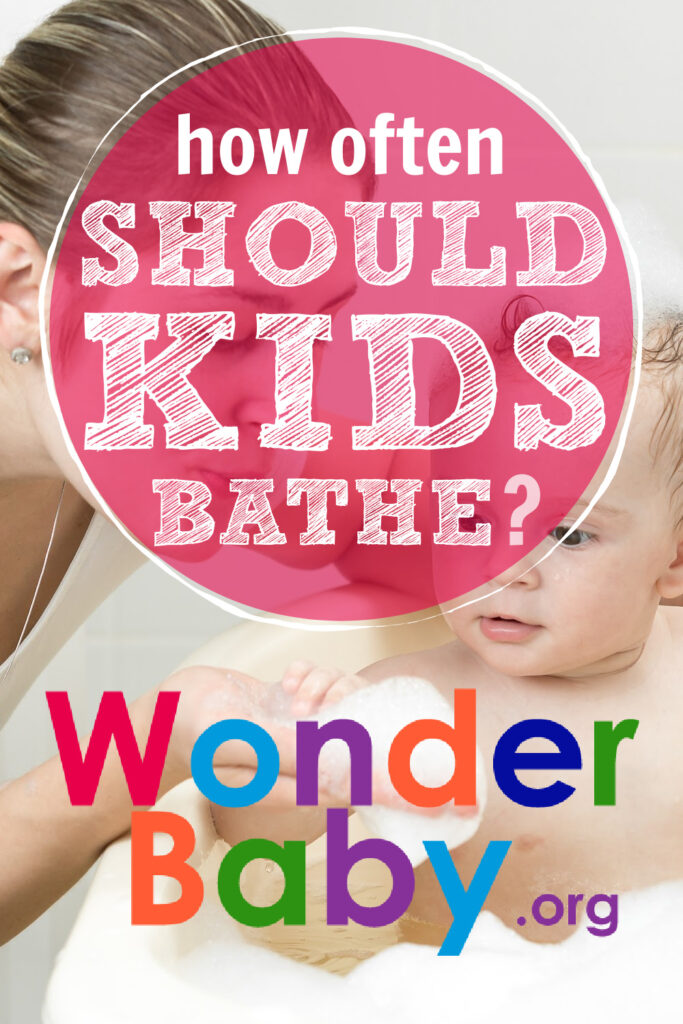
Related Posts
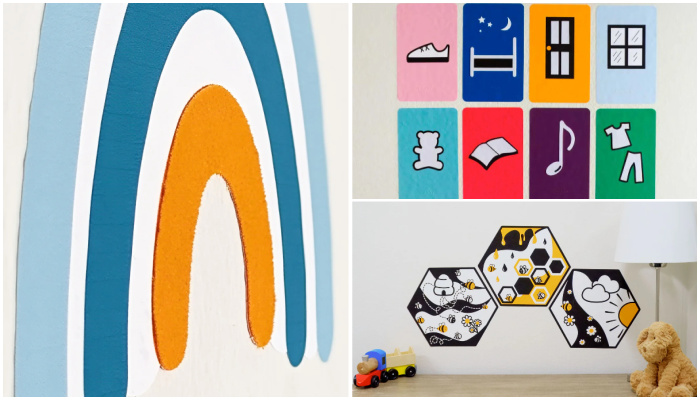
Parenting
Sensory Wall Art: 5 Tips to Create a Room Your Blind or Low-Vision Child Will Love
Even if your child can’t see their surroundings, personalizing and decorating their room with thoughtful, sensory-friendly design can make a big difference in their confidence, independence, and joy.
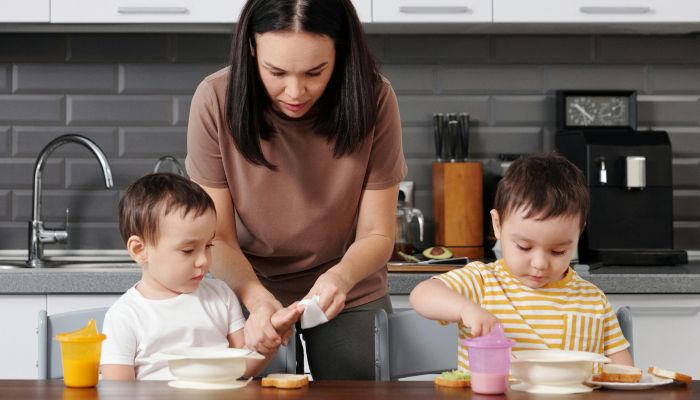
Parenting
4 Tips to Manage Twins Alone as a Single Parent
Taking care of twins alone as a single parent can feel overwhelming. Learn practical ways to help lighten the load.

Parenting
How to Manage Twin Escalation Syndrome
Discover effective strategies for managing twin escalation syndrome, including promoting individuality and fostering positive interactions.